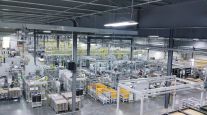Contributing Writer
Aftermarket Parts Costs Are Stabilizing
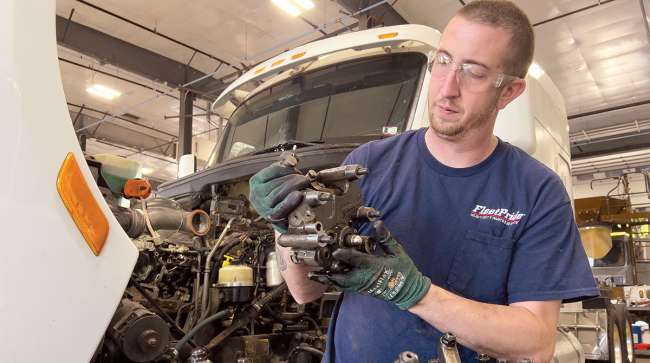
[Stay on top of transportation news: Get TTNews in your inbox.]
Industry leaders are pointing to several positive indicators that have caused a drop in aftermarket parts prices in the second quarter of 2023 from the first quarter, according to the findings from the Decisiv Vehicle Maintenance Reporting Standards System Service Data Quarterly Report.
That good news comes after a sustained period of rising prices and sometimes limited availability. The report found that combined parts and labor costs across 25 VMRS categories were 1.3% lower in the second quarter than the first. That followed moderate increases of 0.8% in the first quarter and 0.9% in the fourth quarter of 2022.
Parts costs fell 1.6% in the second quarter following a 0.4% decrease the quarter before. Labor costs fell 0.8%, the first decrease in four quarters. Year-over-year, combined parts and labor costs rose 5.57%, which was much less than the 15% increase of a year earlier.
The quarterly analysis of North American parts and labor costs was done by Decisiv in conjunction with American Trucking Associations’ Technology & Maintenance Council. The report tracks service and repair events for more than 7 million commercial assets at about 5,000 service locations.

Braswell
Robert Braswell, TMC’s executive director, said the trend is improving after reaching its worst point during the last three quarters of 2021.
“If you compare to where we were several quarters ago, we’re finding that parts and labor costs across just about all the VRMS system categories that we track are lower,” he said.
He believes pricing will be similar in the near term, assuming inflation doesn’t spike and major disruptions don’t occur. Parts and labor rates should remain above pre-COVID levels until inflationary pressures diminish.
“We’re expecting things to probably be trending along the same lines for the next quarter or two,” he said. “We’ll just have to see how it goes along. It’s trending better. That’s the bottom line.”
Reasons for Lower Prices
Braswell credited the improvement to several factors. One is decreased COVID-related supply chain disruptions. Manufacturers aren’t scrambling so much for parts for new trucks, making aftermarket parts more available. Build rates and truck sales are now roughly balanced, while labor issues are mitigating. Meanwhile, truck tonnage was down 3% in July year-over-year, the fifth consecutive drop. Lower freight volumes and an influx of new trucks decrease demand for service and repairs.
Four VMRS categories accounted for 60.2% of combined parts and labor costs in the second quarter: Powerplant (35.9%), exhaust systems (12.9%), cooling systems (6.1%) and fuel systems (5.3%).
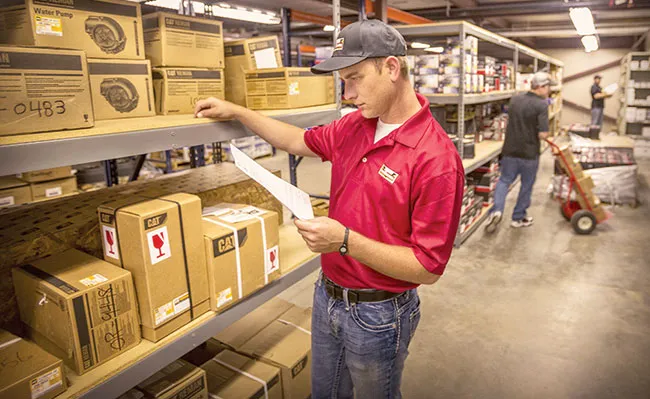
Parts and labor rates are expected to be above pre-COVID levels until inflationary pressures diminish. (Rush Enterprises)
Price fluctuations varied according to VMRS code. Cab and sheet metal parts had the largest variance between the quarter-over-quarter and year-over-year costs. Second-quarter costs fell 8.4% but were 13.8% higher year-over-year. Air conditioning, heating and ventilating costs rose 2.2% in the quarter but increased 15.1% year-over-year. Powerplant parts costs rose 2.9% in the second quarter and 6.3% year-over-year.
Other codes fell in price. Frame parts fell 5.6% on a quarterly basis and 0.4% year-over-year. Brake costs fell 2.2% in the quarter and 0.8% year-over-year. Cooling systems costs fell 1.4% in the second quarter and 0.2% year-over-year.
Mike Keller, vice president of category management and sourcing at parts distributor FleetPride, said prices increased in 2021 and 2022 but have flattened this year. He has seen significant improvement in the supply chain, production and availability.
“We haven’t seen nearly as many cost increases come through in 2023,” he said. “I think it’s more stabilized.”
He said a primary factor for this year’s costs are carryover costs from 2022. Cost variances depend on the manufacturer and are often driven by commodity-related factors or contractual agreements tied to product qualities. Heavier and bulkier items tend to have increased more. Suppliers point to labor, freight, steel, aluminum, and chemicals and additives as driving factors.
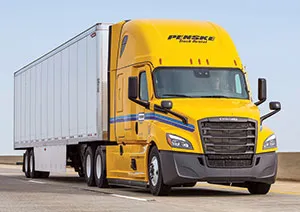
Industry leaders say smaller, simpler, high-volume parts like nuts, bolts and filters are the most likely to be decreasing in price. (Penske)
Penske’s Paul Rosa, senior vice president of procurement and fleet planning, said parts composed of precious metals along with electronics parts are still high. Costs for brake pads with a lot of metal rose while catalytic converter prices increased significantly, along with chips, circuit boards and wiring harnesses.
Rosa noted that fluids are high because of oil prices. Smaller, simpler, high-volume parts like nuts, bolts and filters are the most likely to be decreasing in price. A big factor is the number of movements a part makes through the supply chain, which can accumulate costs along the way. The distance traveled also matters, he explained.
Labor has been a big variable. Many of Penske’s providers could not keep a constant labor force the past few years, creating a backlog. Providers overhired while expecting attrition, and they paid higher salaries. Manufacturers have added redundancy in response, which adds to cost. Rosa said Mexico suppliers are over-hiring and doing extra training and cross-training. They are also doing more checking and inspecting. He also noted costs overall are still high for his fleet of more than 444,000 vehicles.
“Unfortunately, we’re kind of at that peak, and I hope that we’re going to see things start to settle very soon,” he said, adding that parts cost averages like the Decisiv report’s might mask the fact that certain parts remain costly.
“We look at it and measure it in a little bit of a different way: How late are parts from what they were to what they are?” Rosa said. “How much has each individual category of parts been up or down versus prior period? And there has been some abatement, but there’s still a larger group of parts that we’re still seeing these issues with compared to the entire suite of parts.”
Tucker Morgan, corporate parts director for dealerships Kenworth Sales and Truck Enterprises, which together have 34 rooftops, said the largest price decreases have been in products more tied to the commodity from which they are made. Those have fewer steps in the process. Price decreases may not occur with a fuel injector but may occur with a cast-iron drum. Some brake drum prices the past month had seen prices return almost to 2021 levels.
Morgan said vendors have been able to dictate prices based on availability. For many customers, pricing has not been as important as being able to get the part and the service that comes with it. That pressure has decreased this year, and he does not expect prices to increase.
Further, the scarcity factor that inflated prices the past two years is lessening. Dealers, vendors and customers won’t want to stockpile a part that may be cheaper next month, which motivates dealers and vendors to drop prices. Morgan expects dealers and independent parts providers to have a very competitive year in 2024.
“We’ve seen a lot of vendors decrease their prices this year,” he said. “This was my first year ever of having to write down a certain portion of inventory so that we could actually get it sold.”
Future Outlook
Heading into 2024, manufacturing, warehousing and transport have all stabilized, Rosa said. The production of new equipment and parts will be more predictable. While Rosa expects next year to be more stable, he doesn’t know how much prices will fall. If labor prices can’t recede, inflation will have to come down, which starts with fuel prices.
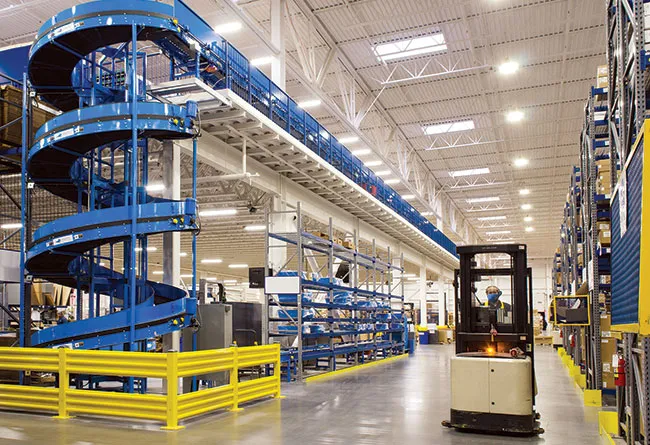
With new EPA regulations looming, fleets are expected to pre-buy trucks as was done before the last emissions standards in 2007. (Paccar)
“Throughout the supply chain of when a part’s manufactured to when it’s delivered to an end customer, you had disruption,” he said. “And I think coming through all that, ’22 and ’23, the industry is poised to have a stable year next year.”
Rosa noted that the industry is “not completely out of it,” just yet.
Morgan said as demand loosens, commodity and nonproprietary parts prices may fall. At the same time, manufacturers may increase the cost of proprietary parts to make up the difference. Cheaper aftermarket solutions for proprietary parts may emerge. Remanufacturers and component repairers have entered the market where previously fleets would have simply purchased a new part.
Braswell noted that parts price trends have depended on what a carrier is hauling.
“Some industry sectors were hurt worse than others. If you were hauling fuel in the early part of COVID, well, you probably weren’t hauling much fuel to start with because there wasn’t much of a demand for it,” he explained. “But if you were in the grocery business, wow. You’ve got a lot of miles you’re putting on those trucks, so it varies to the sector, obviously.”
Parts costs varied by region in the Decisiv report. In June, average repair orders in the West were $1,146, while in the Northeast they were $1,080, and they were $1,002 in the South and Canada. The Midwest was cheapest at $945. Braswell attributed the difference to factors such as travel distances and the regulatory environment.
Maintaining quality was a challenge during the pandemic. Suppliers were shipping more bad parts. Turnover was high in 2022, which decreased quality, Rosa said. Morgan agreed that there was a small dip in quality in 2021 and 2022.
With the EPA set to enforce new nitrogen oxide emissions in the 2027 model year, Rosa expects fleets will pre-buy trucks as they did before the last emissions standards in 2007. They’ll want to buy the trucks they know rather than ones tied to the new standards, and then they may hold on to trucks longer. Older trucks need more parts, which could inflate demand.
“[The] model year ’28, could be a very difficult year if it repeats what we saw in ’07, and I don’t know why it wouldn’t,” he said. “As a fleet as we’re looking at this, I think it’s going to be a pretty tough year because that technology is going to be a difficult one for people to want to go and jump into. And that’s just on the traditional internal combustion engine side.”
Want more news? Listen to today's daily briefing below or go here for more info:


